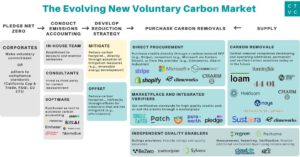Who Can Trade Carbon Credits?
Trade Carbon Credits
Carbon credits are tradable ‘rights’ or certificates linked to projects that reduce greenhouse gas emissions. They are used by businesses to compensate for their own emissions or by individuals to achieve a carbon neutral lifestyle. There are a number of players that make up the carbon market and they interact in complex ways. The most important function is linking supply and demand, which is accomplished by brokers and exchanges. There are also a number of organizations that provide project development, verification and risk management services for the industry.
There are a wide range of factors that impact the price of a carbon credit, but two of the most important are the nature of the underlying project and the additional co-benefits. Projects that generate extra benefits, such as jobs for local communities or biodiversity protection, are called “co-benefits” and can increase the value of a carbon credit. In contrast, large industrial projects that don’t produce these types of additional benefits or meet the UN’s Sustainable Development Goals (SDGs) often trade at a discount.

The most obvious way that trade carbon credits are traded is in a cap and trade system, where a governmental organization sets an overall limit on how much a company can emit and then issues a set number of credits to each company that can be offset against their emissions. However, the majority of carbon trading takes place in bilateral conversations and over the counter deals. This is largely because carbon pricing is not as transparent and easy to understand as other commodities.
Who Can Trade Carbon Credits?
A carbon credit is a unit that represents one metric ton of reduced, avoided or removed GHG emissions. A credit’s price is determined by how it is marketed and sold, with different buyers and projects competing for the same consumers. There are many ways that a credit can be sold and each type of sale is known as a “type” of carbon transaction.
In order to facilitate these transactions, a number of environmental commodity exchanges have emerged. These exchanges list carbon credits for sale and work with registries to enable the trading of these units. The largest exchanges are New York-based Xpansiv CBL and Singapore based ACX. There are also a handful of specialized exchanges that focus on certain types of credits, such as CBL’s Nature-based Global Emissions Offset or ACX’s Global Nature Token.
These exchanges and registries connect carbon buyers with sellers through brokers and retailers. Similar to other commodity markets, these traders are responsible for bundling and marketing carbon credits and then selling them on to end buyers with some form of commission. Many brokers and retailers have both brokering and project development arms, so it is important for an individual to carefully review the portfolios that these companies have on offer.
Another key player is the standard, or certification body, for each type of carbon transaction. These organizations, often NGOs, are responsible for creating and overseeing the methodology that must be followed by each project to create its associated carbon credits. This helps to ensure that the units are of high quality and that they can be independently verified by other parties.